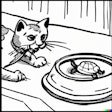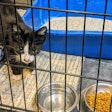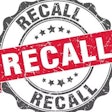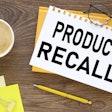
There are certainly enough food safety certifications in the pet food industry to go around. Ensuring compliance among state, federal and international standards is complicated enough, to say nothing of choosing the “right” independent, third-party, industry and retailer standards. While a lot of the requirements are par for the course when it comes to how the pet food industry does business anyway, there are still decisions to be made.
“Requirements under the Food Safety Modernization Act (FSMA) set the standard for food safety practices among US pet food makers,” said Mary Emma Young, director of communications at Pet Food Institute. “However, companies may choose to participate in additional third-party certification programs. There are various certifications available which can support an organization’s individual needs, such as retailer audience or internal food safety goals. It is important to note that while these programs may support certain FSMA safety requirements, certification does not inherently equal compliance with the federal regulations.”
The role of third-party pet food safety certifications
The food industry in general has been adopting Hazard Analysis and Critical Control Points (HACCP)-based food safety management systems since the mid-2000s, according to Gayan Hettiarachchi, MVM, MSc., director of food safety at Champion Petfoods, and food safety plans, prerequisites and good manufacturing practices were the fundamentals of the system. But third-party food safety certifications have added another layer, endorsing food safety management systems on the basis of objective, evidence-based audit systems based on ISO auditing standards.
“Having a third-party food safety certification validates the design and implementation of the food safety system and provides opportunities to look for any room for improvements in the system,” said Hettiarachchi. “We don’t just see it as a competitive advantage; we want to get food safety right for everyone, not just for us. If there’s a recall, for example, it doesn’t matter where it originates from — the whole industry suffers.”
That validation isn’t limited to pet food manufacturers. Suppliers also understand and accommodate the focus on food safety, gaining third-party certifications as a way to work with their customers as well as keep track of their internal food safety processes.
“The major certification we see that most people want is something accredited by GFSI (the Global Food Safety Initiative), whether that’s BRC (British Retail Consortium) accredited or FSC22000 certified or something else,” said Jim Mann, global antioxidant product manager for the pet food and rendering technologies division of Kemin Industries. “When we get audits from pet food manufacturers, that’s really what they want to see — they want to see how we’re implementing that. I think beyond that you have, when you trade globally, most of the companies that export to Europe want to see FAMI-QS (the Quality and Safety System for Specialty Feed Ingredients) certification. Today those are the big things that we see.”
The challenges of pet food safety certifications
Industry experts on both the manufacturing side and the supplier side said there are challenges to gaining and implementing food safety certifications, but that most of the pressure comes from within.
“The pressure to gain third-party food safety certifications mostly comes from within our organization,” said Hettiarachchi. “There are instances where customers, different export regulators, insurance companies, financial auditors and even bankers request third-party food safety certifications. But at Champion Petfoods we believe it is our moral obligation to do the right thing by validating our food safety system against the best possible third-party food safety standards out there.”
Being proactive rather than reactive can allow a company to stay ahead of a game that is becoming increasingly demanding.
“I think a lot of the industry has taken a step beyond certifications to see how you’re managing your quality,” said Mann. “They want to see that you’re doing internal audits and that you’re having external audits, as well.
“We’ve taken it a step further, even, and have what we call ‘raw material risk assessment program’,” said Mann. “We have a toxicologist on site and, whenever we bring in a new supplier or raw material source, they review that and tell us what we need to do to test it. We’ve actually developed our own internal laboratory to do some of that high-risk testing.”
Beyond internal pressures, there are logistical factors that can make pet food safety certifications challenging.
“We export our foods to over 82 countries with different food safety and regulatory regimes, and within the United States there are different regulatory requirements for each state,” said Hettiarachchi. “In addition to that, in the US the Association of American Feed Control Officials (AAFCO) governs the federal regulations on pet food nutrition and labeling, whereas the European Pet Food Industry outlines the nutritional, labels and food safety requirements for the European Union. It’s a real challenge to make sure the foods we make meet all the nutritional, safety and labeling regulatory requirements in all export countries and different state jurisdictions.”
Having the resources to meet those challenges is key to success, according to the industry.
“Having a blanket third-party food safety system certification based on a GFSI-recognized scheme helps us navigate through the different export and state regulatory requirements,” said Hettiarachchi. “Ultimately, all food safety requirements are based on fundamentals in food safety systems.”
Manpower is, naturally, key among those resources.
“Obviously you have to have the people in place to manage [the safety processes], you have to have people trained internally to do audits and you have to have an organizational commitment,” said Mann. “The certification [alone] really isn’t that important, it’s the buy-in from people that this is the way we’re going to treat our customers, and this is the way we’re going to protect our business and protect our customers’ business.”
Protecting the industry and its customers
Uncertainty is perhaps the greatest enemy of pet food safety, and the industry must continue advancing in its knowledge and its processes to minimize the potential of unexpected contamination or adulteration in the future.
“I think that, going forward, the risk to the pet food industry isn’t what we know, it’s what we don’t know,” said Mann. “And so trying to figure out what that is and having programs and systems in place to try to minimize those risks, that’s really what we try to do. Not only minimize our risks, but minimize our customers’ risks, as well.”
Expert opinion: How suppliers can meet manufacturer food safety certification needs
Petfood Industry magazine asked Jim Mann, global antioxidant product manager for the pet food and rendering technologies division of Kemin Industries, what pet food manufacturers should expect from their suppliers when it comes to safety certifications.
“Obviously with the food safety initiatives going on, GFSI (Global Food Safety Initiative) certification, or some sort of certification that’s accredited is the minimum that you have today,” said Mann. “If you don’t have that, you’re really not providing what the end customer really needs. Beyond that, there are a lot of certifications — e.g., kosher, halal — that are independent, and are determined by what individual customer demands are. They’re more addressing the needs of the marketplace.”
Overall, said Mann, what suppliers should be doing is working with their customers to understand what those customers want, and then adapting their processes accordingly.
Expert opinion: The benefits of third-party pet food safety certifications
Petfood Industry magazine asked Gayan Hettiarachchi, MVM, MSc., director of food safety at Champion Petfoods, what some of the benefits are of obtaining and maintaining third-party food safety certifications.
“First and foremost, a third-party food safety certification validates the design of the food safety systems and verifies the implementation of the system,” said Hettiarachchi. “It provides peace of mind to pet lovers by ensuring the safety of our foods."
“It also enhances the awareness of food safety and builds a strong food safety culture,” said Hettiarachchi. “When we talk about food safety culture, we’re talking about how we act when no one is observing us or how we take initiative even when we’re not being judged. Food safety culture is about people taking leadership of what they’re doing. It’s how we live, day in and day out. We believe in food safety as a fundamental value. That message moves downstream to our partners across the supply chain. They get the message that we value food safety and it raises the bar for everyone involved. Food safety is dynamic, not static. There’s always new science, new information and new challenges.”



















